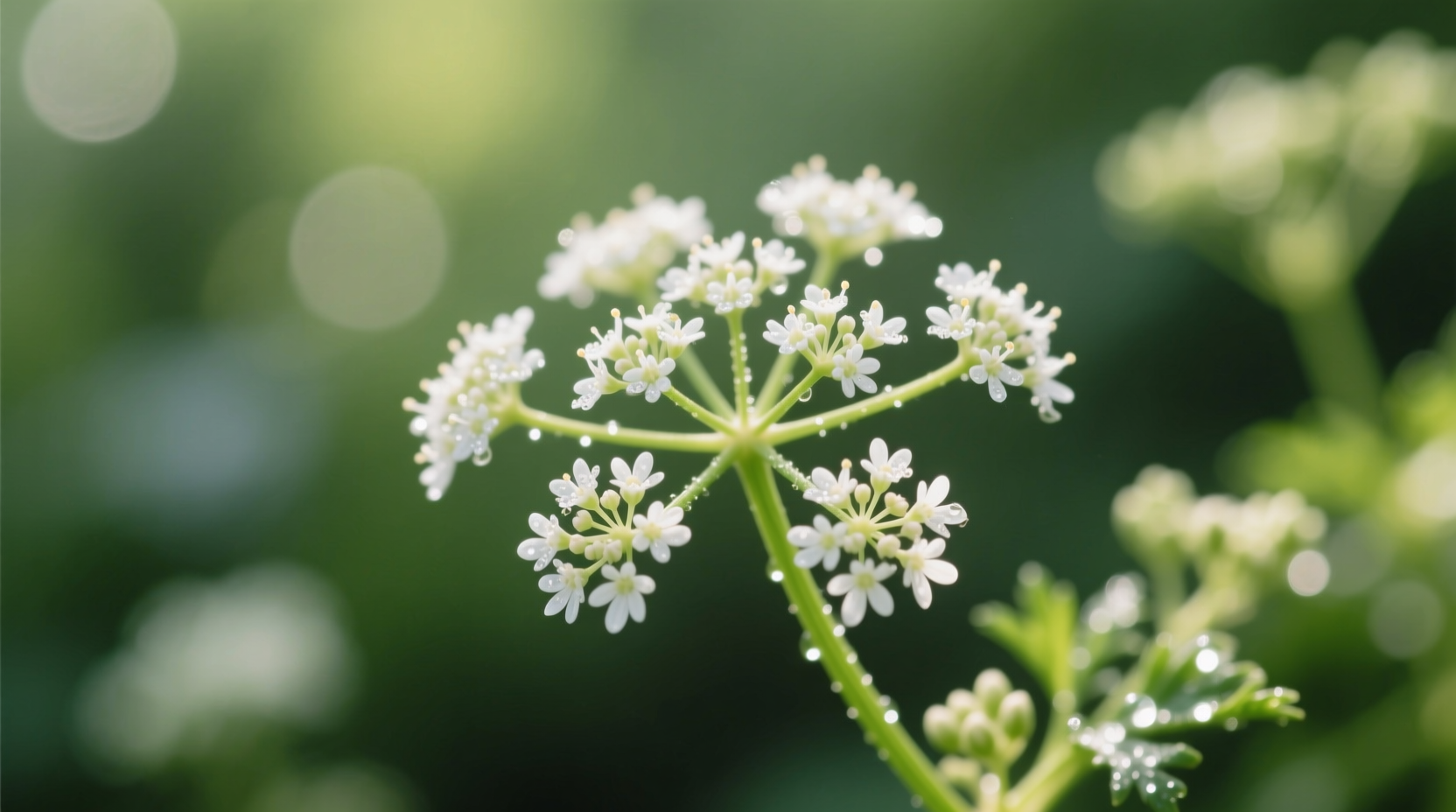Discover exactly what happens when your parsley plant sends up those delicate white flower clusters and how to maximize your harvest. Whether you're growing parsley in containers on your balcony or in a garden bed, understanding this natural process helps you make informed decisions that impact flavor, yield, and future plantings.
Why Parsley Flowers: The Natural Life Cycle Explained
Parsley (Petroselinum crispum) is a biennial plant, meaning it completes its life cycle over two growing seasons. During its first year, it focuses on leaf production. In the second year, or sometimes prematurely in the first year due to stress, it bolts—sending up a central flower stalk.
University of California Agriculture and Natural Resources explains that temperature fluctuations, particularly exposure to cold followed by warm weather, trigger this reproductive response. When days lengthen and temperatures rise above 75°F (24°C), parsley receives signals to flower and produce seeds before the growing season ends.
| Stage | Visual Characteristics | Impact on Plant |
|---|---|---|
| Pre-flowering | Dense leaf clusters, vibrant green | Optimal flavor and tenderness |
| Early flowering | Central stalk emerging, small buds | Leaves begin losing sweetness |
| Full flowering | White umbel flowers, 1-2 ft tall | Leaves become noticeably bitter |
| Seed production | Dry brown seed clusters | Plant redirects all energy to seeds |
How Flowering Changes Parsley's Flavor and Usability
That familiar fresh, grassy parsley flavor diminishes significantly once flowering begins. Research from Cornell University's School of Integrative Plant Science shows that bolting redirects the plant's energy from leaf production to flower and seed development, altering chemical composition.
The concentration of apiol and myristicin—compounds responsible for parsley's characteristic flavor—decreases as flowering progresses. Simultaneously, bitter compounds increase, making leaves less desirable for culinary use. This flavor shift typically begins when the flower stalk reaches 6-8 inches in height.
To Flower or Not to Flower: Practical Decision Guide
Whether to allow your parsley to flower depends on your gardening goals. Consider these factors when making your decision:
- For maximum leaf harvest: Remove flower stalks immediately upon appearance to extend productive life by 4-6 weeks
- For seed collection: Allow 1-2 plants to flower completely for harvesting viable seeds in late summer
- For pollinator support: Let flowers bloom to attract beneficial insects like hoverflies and parasitic wasps Container gardening Higher risk of premature bolting due to root restriction Pinch flowers aggressively; consider replacing plant Culinary focus Flavor degradation affects cooking quality Remove flowers; prioritize leaf production Seed saving Natural progression to seed production Allow flowering; mark productive plants
- Early detection: Check plants every 2-3 days during warm weather for central stalk emergence
- Immediate action: Using sharp scissors, cut the flower stalk at its base where it meets the main stem
- Nutrient boost: Apply balanced liquid fertilizer (10-10-10) to encourage new leaf growth
- Water adjustment: Increase watering frequency to keep soil consistently moist but not soggy
- Shade protection: Provide afternoon shade if temperatures exceed 80°F (27°C)
- Harvest strategy: Pick outer leaves first, allowing inner growth to continue
- Temperature management: Mulch heavily (2-3 inches) to keep roots cool during summer heat
- Succession planting: Sow new seeds every 3-4 weeks for continuous harvest of young plants
- Varietal selection: Choose slow-bolting cultivars like 'Italian Flat Leaf' or 'Hamburg Rooted'
- Water consistency: Maintain even soil moisture—avoid drought stress that triggers bolting
- Partial shade: Plant where it receives morning sun but afternoon shade in hot climates
- Edible garnish: Sprinkle fresh flowers on soups, salads, and roasted vegetables for mild parsley flavor
- Herb vinegar: Steep flowers in white wine vinegar for delicate herbal infusion
- Seed collection: Harvest brown seed clusters, dry completely, and store in airtight container
- Companion planting: Allow some plants to flower to attract beneficial insects to your garden
- Seed saving: Parsley seeds remain viable for 2-3 years when stored properly in cool, dark conditions
- Leaves consistently taste bitter even after flower removal
- Less than 30% of the plant remains green and vigorous
- Multiple flower stalks continue emerging despite regular pruning
- The plant has completed its second growing season
Step-by-Step: Managing Flowering Parsley
Follow this practical sequence when you notice your parsley beginning to flower:

Preventing Premature Flowering: Proven Techniques
While you can't stop parsley from eventually flowering (it's biologically programmed), you can delay the process significantly with these methods:
According to Oregon State University Extension Service, consistent moisture is the single most effective factor in delaying bolting. Their field trials showed plants receiving 1 inch of water weekly bolted 2-3 weeks later than those with irregular watering.
Creative Uses for Parsley Flowers and Seeds
Don't discard those flowers—they offer culinary and gardening value:
The Royal Horticultural Society notes that parsley flowers provide nectar for pollinators when many other plants aren't blooming, making them valuable for ecosystem support even if you're primarily growing parsley for culinary use.
When to Replace Your Parsley Plant
Despite your best efforts, flowering signals the end of a parsley plant's most productive phase. Consider replacing it when:
Start new plants from seed every 4-6 months for continuous harvest. Parsley seeds can take 2-4 weeks to germinate, so plan ahead for seamless transitions between plants.











 浙公网安备
33010002000092号
浙公网安备
33010002000092号 浙B2-20120091-4
浙B2-20120091-4